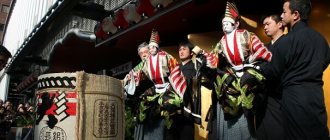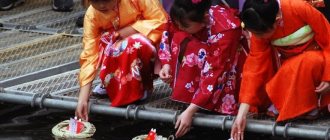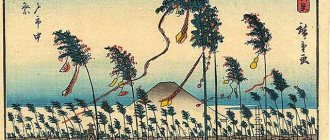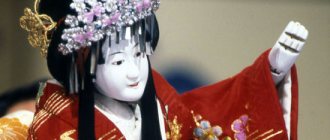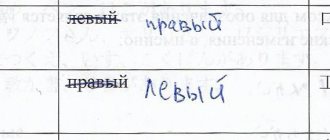Kasa - wide-brimmed straw hat from Japan
The specific monsoon climate of Japan, characterized by long rainy seasons, affected not only the original Japanese architecture, but also the national clothing of the Japanese, primarily the shape and material of hats, capes, and shoes.
It was thanks to the rain pouring in buckets, back in time immemorial, that the inhabitants of the Japanese islands had wide-brimmed kasa woven from straw, bamboo, reeds, and sedge. There were a great many variants of these wicker hats, and while they were similar in appearance, each of the variants had significant differences and its own name.
Susegasa were intended for work in the field, kumagaigasa - for warriors, and oriamigasa - for everyday wear by representatives of the lower classes. Wandering monks put on their heads something like a bucket woven from straw and completely hid their face - tengai , and messengers used conical sandogas .
To prevent the straw headdress from getting wet from water and becoming unusable, the kasa was often coated with varnish.
Wide-brimmed straw hat casa - the “calling card” of Asia
What does a Chinese hat look like?
The traditional Asian hat is a cone that is secured to the head with a chin strap .
Rarely, but still there are options with a prominent crown - a rounded part, characteristic of classic European hats.
The material usually used is leaves, such as reed or palm . They are dried and evenly distributed over a frame of thin bamboo rings. Then they fasten it together... with the same leaves!
Headdresses are often decorated with embroidery or silk .
Umbrella as a status symbol
Is it any wonder that the first umbrellas imported from China to Japan in the middle of the 6th century also began to be called casa , although with a different hieroglyphic spelling.
Don't let the word “umbrella” fool you. Today's umbrellas are very vaguely reminiscent of ancient casa, which are rather a lightweight portable tent consisting of a silk awning stretched over a wooden frame supported by a long stick. This completely non-compact structure was carried by servants over the heads of an important official, for example an ambassador arriving from China, not only on cloudy, rainy days, but also in clear weather.
The casa-umbrella of that period was not a means of protection from bad weather, but rather a status attribute, indicating a person’s high state rank.
This is exactly how the umbrella was perceived by the Japanese of those ancient years. Shinto priests regarded this portable shelter from rain and sun as the temporary abode of a deity. Accordingly, Chinese umbrellas ( caracas ) came into use as a ceremonial accessory for the highest religious and state nobility. The formality of the purpose of Caracas was emphasized by its red color, characteristic of all official ceremonies in the country. Noble owners of the umbrella often decorated its red dome with their family coat of arms.
This nuance can be traced to the present day. It is very typical that the umbrellas opened in parks and gardens for holding a tea ceremony under them are always red in color.
At the beginning of the 11th century, the writer and poetess, author of the famous “Notes at the Bedside” Sei Shonagon mentioned caracas in the list of things necessary for every home. Naturally, this remark was made by a lady of the court. For the lower classes, such a “necessary thing” was most often unavailable.
What's special?
The hat has a number of functions that allow the item to be used not only as a headdress, let's look at them.
1. Umbrella in any weather
It's no secret that Vietnam is a rather hot country and even local residents are forced to protect themselves from the sun's rays. But rain is not excluded. They also happen very often, sometimes for several months. Therefore, a hat perfectly replaces an umbrella and frees up your hands.
2. Use as a basket or utensil
The Vietnamese also wear a palm hat during field work, on the way to the market or at folk festivals. The conical shape allows the hat to be used as a grocery basket or as a serving utensil. They even eat and catch crabs from it.
3. Cooling “device”
The hat is woven quite tightly and holds water well, so it can be used as a ladle - to wash your face, refresh yourself near a pond, or quench your thirst by scooping up water from a clean mountain stream. Also, the headdress can simply be wetted and put on the head or used as a fan.
4. Personal “bodyguard”
Initially, in the Middle Ages, the hat was created to protect against snakes. Since there are many snakes in the trees in Vietnam, when farmers worked in the forest, snakes fell on this hat and rolled off it due to its canonical shape. Surprisingly, some snakes can jump a distance of 1-2 meters. And also, a hat can save you from a coconut falling from a palm tree (previously there was a high mortality rate for this very reason).
5. Will take the turn for you
This curious feature comes from the 1980s. When, in the post-war period, there was a shortage of goods, the Vietnamese had to stand in huge lines in stores. And since a personal hat is perceived as an identifier of its owner, the Vietnamese easily left the hat in their place to “hold the line” when they themselves needed to go somewhere.
6. Romantically declares his love
Of course, this is not a talking hat from Hogwarts, however, the use of Non La in confessions to the other half is popular. Vietnamese people know romantic and beautiful ways to show their feelings to their lovers. For such an occasion, they prepare a special hat - a poetic one. The unusual thing is that between the layers of leaves there are pictures with lyrical scenes and notes - poems (of one’s own composition or quotes from celebrities). Or you can simply cover yourself with a hat while kissing.
7. A designer move and a great gift
Many designers like to use non to decorate the interior; it adds its own zest and flavor. Preference is given to natural hats. This is also an unusual travel gift. The cost of such a hat is quite low - from 10,000 to 100,000 dong (from 0.5 to 5 USD). It can be found in almost every city in Vietnam in the central market.
Japanese umbrella - wagasa
Gradually, the tradition of carrying an umbrella spread to lower-ranking priests, including monks. Caracasa replaced the traditional wide-brimmed casa hat for them, although it itself underwent changes - the “Chinese umbrella” seriously decreased in size and became more compact, and it provided less “prestige” to the owner - instead of a silk awning, the monks began to stretch oiled paper onto a bamboo frame.
It was only at the beginning of the Edo period (1600-1868) that umbrellas became part of the everyday life of ordinary people. However, by that time, perhaps only an idea remained of Caracas. Thanks to the creative approach of Japanese artisans, umbrellas have become more comfortable, lighter, and even elegant. Having abandoned the silk covering, the craftsmen widely used oiled paper, which was produced in considerable quantities in the country. But the main thing is that the umbrellas began to fold. Hence their new name - wagasa (Japanese umbrella).
The method of making vagas was simple, but labor-intensive. It was necessary to precisely check the length and fastenings of the bamboo ribs, tying them with horsehair. The top of the ribs was covered with kozo paper treated with persimmon juice. The pasting process was especially complex and responsible, because not a drop of rainwater should have leaked under the canopy of the umbrella. Next, the master covered the paper top with red paint, which was then additionally coated with linseed or hemp oil. And finally, the final processing of the product was carried out by applying varnish to the wooden parts of the umbrella. The finished umbrellas were taken out to the field, where they dried in the sun.
A wagasa made in this way could last for ten years, provided it was handled with care. The paper softened from moisture, so the umbrella had to be thoroughly dried after each rain, but not overdry, so that the coating would not become too hard and brittle.
Girl with Japanese Wagasa Umbrella
Traditional Japanese hats (kasa or gasa) are one of the most striking and exotic elements of Eastern culture. Today they can be seen mainly in various performances dedicated to Japan itself, films, games, and comics. But for the people who created and wore these hats, at that time their practical significance was much more important, as well as the ways in which this or that type of hat could determine belonging to a class or estate.
Kasa was worn by almost all segments of the Japanese population - from peasants and wandering monks to large daimyos and the shogun himself. There are a considerable number of different types of Japanese hats; they differ in shape, material, color, and purpose. They were united by a common style - a fairly large size (until the beginning of the eighteenth century) and a peculiar simplicity of form. And although at first glance they are all similar, like two wicker baskets to one another, but if you look closely you can see quite clear differences between each type of gas in all their diversity.
- Amigasa are the most commonly mentioned type of wide-brimmed hat, a general designation for "braided kasa". Today it is a circle of rice straw, slightly curved or completely folded in half, covering the face and worn mainly by dancers at festivals.
- Fukaamigasa - hats of wandering komuso monks. These kasa were more like large baskets and completely hid the head of the wearer. The front part was made of rarer stems, which allowed the monk to calmly look at the world, being completely unrecognizable.
- Sugegasa is the simplest type of casa, widespread throughout Asia. This is an ordinary conical hat made of reed, straw or paper; you can find it even today not only in Japan, but also in China, Korea, Cambodia and many other places, although it will be called differently everywhere.
- The sandogasa is a round hat for travelers, with a wide, downturned brim and an almost flat top. The shape resembles a segment of a sphere or the cut off top of an apple.
- Takuhatsugasa is a variation of the sandogasa, but with a pointed top. The closest resemblance is the cut off top of not an apple, but a lemon.
- Ajirogasa is a more in-depth version of takuhatsugasa with an almost similar shape.
- Jingasa is the general name for military hats. Dzingas often played the role of helmets, and therefore were sometimes made of material stronger than straw or bamboo - leather, metal, precious wire or silk. Jingasa gained particular popularity from the Edo era among military and police officers. On the “forehead” they almost always had “mon” marks - their clan or clan. The lower layer of samurai had black jingas, the middle layer had scarlet, and the high-ranking daimyo had gold.
- Badze-gasa - a hat (helmet?) made of metal or leather for horseback riding. It is characterized by its small size and smooth bending of the fields.
- Ichimonjigasa is an almost flat wide-brimmed hat.
- Toppai-gasa - conical or pyramidal sasa used in rifle (musket) units.
- Roningasa was a rogue samurai hat that covered the entire face. The shape resembled the lampshade of antique lamps; the front “wall” had frequent holes for viewing.
- Torioigasa is a woven hat made from a “pancake” folded in half.
- The Yagyugasa is a hat depicted on the Yagyu family's coat of arms, with a round, wide-brimmed shape and a convex top.
The traveling hat (which is everywhere called an amigasa for simplicity, although you already know enough terms by now) is included in the list of “must-have items” for a ninja. This is understandable; not everyone will be able to see the face because of such an impressive “visor”. Also, the hat sometimes served as a weapon if it had reinforcement in the brim from a sharp iron hoop (it’s a shame to say that in some places even the steel hat of Kung Lao from Mortal Kombat was called an amigas). In addition, the use of a cone-shaped hat for carrying arrows, which were used as spokes, is widely known.
What is the name of this hat?
The Asian hat - in its most popular version, is a conical hat, but there are also variants in which the crown is isolated. Designed for protection from sun and rain during field work.
Originated in East and Southeast Asia (Vietnam, China, Japan and Korea). The hats are made from palm leaves, textiles (silk is a common material), and there is a chin strap. Straw hats are worn as a makeshift cooling device after immersion in water.
Because of its distinctive shape, it is often used in East Asian images. At some sporting events, it was fashionable for spectators to wear such hats, especially those painted in team or state colors.
In mainland China and Taiwan, the hat is called douli (Chinese trad. pinyin: d?ul?, literally, dhow hat, 10 liters), also Limao kit. trad. . pinyin: l?m?o and zhuli whale. trad. . pinyin: zh?l?).
In Japan it is called sugegasa (Japanese: sedge hat) or amigasa (Japanese: wicker hat).
In Korea it is called satkat (??), it is mainly worn by Buddhist monks[1].
In Vietnam, it's called non. Conical varieties of the hat - nonla (n?nl?) in Vietnam are often painted or painted by hand; in Hue, poems and Chinese characters are written on hats called nonbai th? (n?nb?i th?), which become visible in the light.
Asian hat
The Asian hat
- in its most popular version, is a conical hat, but there are also variants in which the crown is isolated. Designed for protection from sun and rain during field work.
Originated in East and Southeast Asia (Vietnam, China, Japan and Korea). The hats are made from palm leaves, textiles (silk is a common material), and there is a chin strap. Straw hats are worn as a makeshift cooling device after immersion in water.
Because of its distinctive shape, it is often used in East Asian images. At some sporting events, it was fashionable for spectators to wear such hats, especially those painted in team or state colors.
In mainland China and Taiwan, the hat is called a douli
(Chinese trad. 斗笠, pinyin:
dǒu lì
, literally, hat on dhow, 10 liters), also Limao whale.
trad. 笠帽, pinyin: lìmào
and zhuli whale.
trad. 竹笠, pinyin: zhúlì
).
In Japan, it is called sugegasa (Japanese: 菅笠?, sedge hat) or amigasa (Japanese: 編み笠?, wicker hat).
In Korea it's called satkat
(삿갓), it is mainly worn by Buddhist monks [1].
In Vietnam, it's called non. Conical varieties of hat - nonla ( nón lá
) in Vietnam are often hand-painted or painted; in Hue, hats called non bai thơ (nón bài thơ) are written with poetry and Chinese characters, which become visible in the light.
